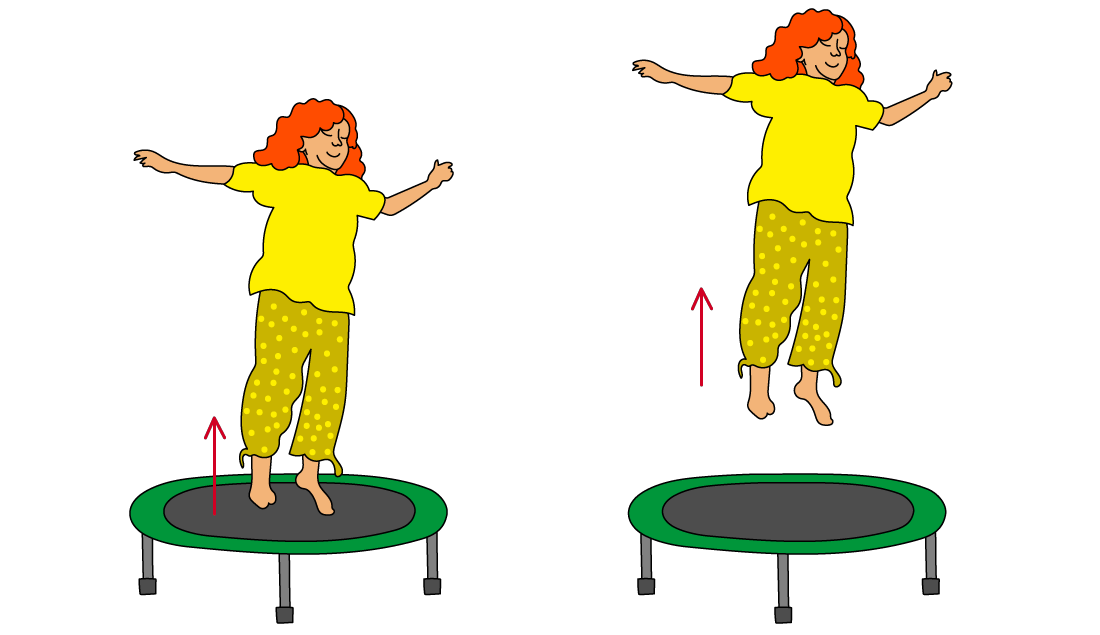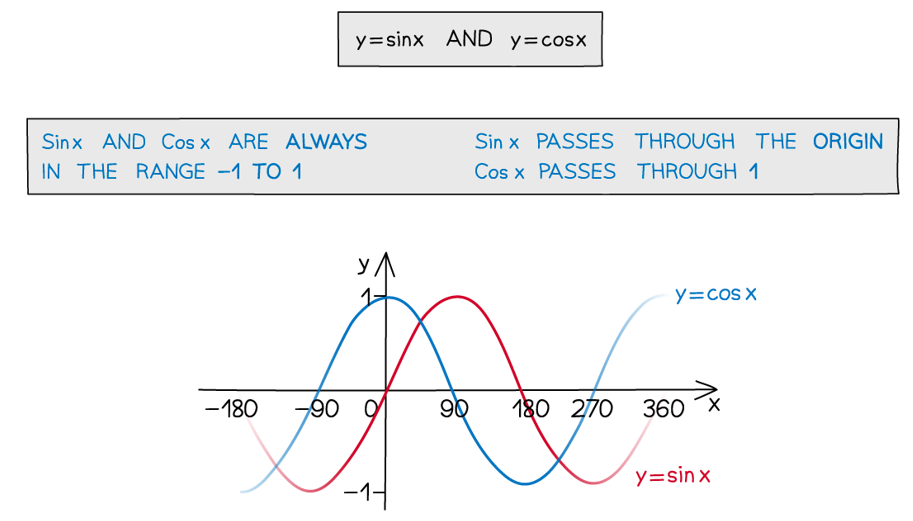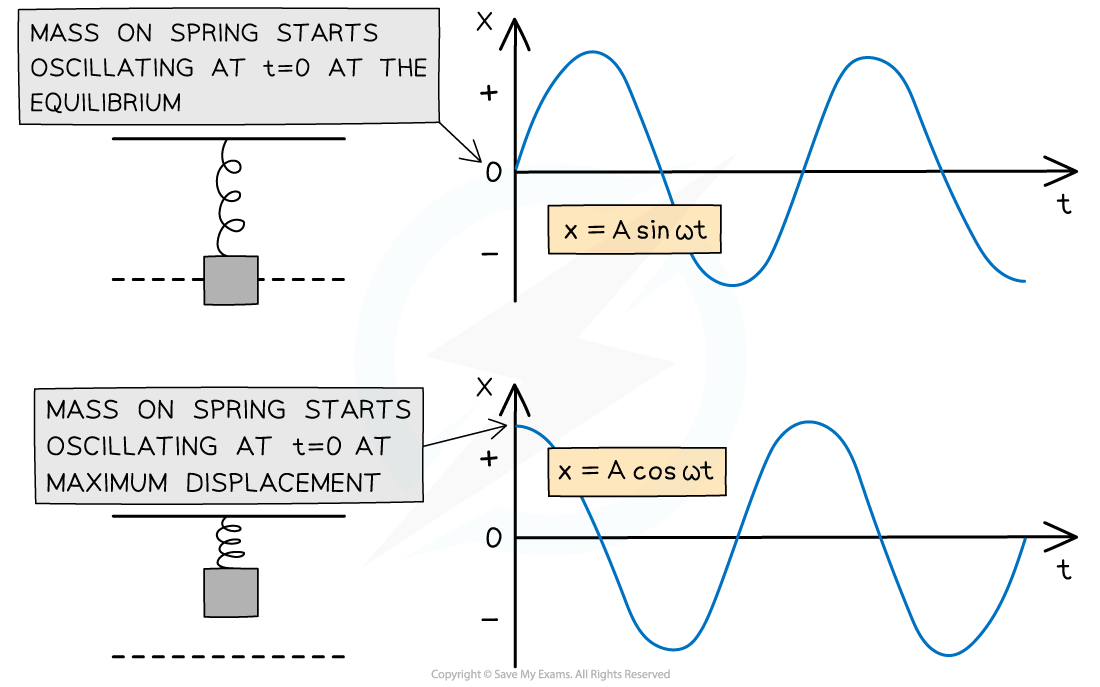Conditions for Simple Harmonic Motion (AQA A Level Physics): Revision Note
Exam code: 7408
Did this video help you?
Conditions for Simple Harmonic Motion
Simple harmonic motion (SHM) is a specific type of oscillation where:
There is repetitive movement back and forth through an equilibrium, or central, position, so the maximum horizontal or vertical displacement on one side of this position is equal to the maximum horizontal displacement on the other
The time interval of each complete vibration is the same (periodic)
The force responsible for the motion (restoring force) is always directed horizontally or vertically towards the equilibrium position and is directly proportional to the distance from it
Examples of SHM
Examples of oscillators that undergo SHM are:
The pendulum of a clock
A child on a swing
The vibrations of a bowl
A bungee jumper reaching the bottom of his fall
A mass on a spring
Guitar strings vibrating
A ruler vibrating off the end of a table
The electrons in alternating current flowing through a wire
The movement of a swing bridge when someone crosses
A marble dropped into a bowl

Examples of objects that undergo SHM
Modelling SHM
Not all oscillations are as simple as SHM
This is a particularly simple kind
It is relatively easy to analyse mathematically
Many other types of oscillatory motion can be broken down into a combination of SHMs
An oscillation is defined to be SHM when:
The acceleration is proportional to the horizontal or vertical displacement
The acceleration is in the opposite direction to the displacement (directed towards the equilibrium position)
The time period of oscillation is independent of the amplitude of the oscillation, for small angles of oscillation
So, for acceleration a and horizontal displacement x
a ∝ −x
You will be required to perform calculations on and explain two models of simple harmonic motion:
A simple pendulum oscillating from side to side attached to a fixed point above
Small angle approximations are applied to the simple pendulum swing meaning that the conditions for SHM described above are valid for horizontal displacement, acceleration and restoring force

Force, acceleration and displacement of a simple pendulum in SHM
A mass-spring system oscillating vertically up and down or horizontally back and forth

Force, acceleration and displacement of a mass-spring system
An Example of not SHM
A person jumping on a trampoline is not an example of simple harmonic motion because:
The restoring force on the person is not proportional to their displacement from the equilibrium position and always acts down
When the person is not in contact with the trampoline, the restoring force is equal to their weight, which is constant
This does not change, even if they jump higher

The restoring force of the person bouncing is equal to their weight and always acts downwards
The Defining Equation of SHM
The acceleration of an object oscillating in simple harmonic motion is given by the equation:
a = −⍵2x
Where:
a = acceleration (m s-2)
⍵ = angular frequency (rad s-1)
x = displacement (m)
The equation demonstrates:
Acceleration reaches its maximum value when the displacement is at a maximum ie. x = x0 at its amplitude
The minus sign shows that when the object is displaced to the right, the direction of the acceleration is to the left and vice versa (a and x are always in opposite directions to each other)
Consider the oscillation of the bob pendulum again:
The bob speeds up as it heads towards the midpoint
Velocity is at a maximum when it passes through the equilibrium position
The pendulum slows down as it continues towards the other extreme of oscillation
v = 0 at A as it changes direction
The pendulum then reverses and starts to accelerate again towards the midpoint
The Graph Representing a = −⍵2x
The graph of acceleration against displacement is a straight line through the origin sloping downwards (similar to y = −x)

The acceleration of an object in SHM is directly proportional to the negative displacement
The key features of the graph are:
The gradient is equal to −⍵2
The maximum and minimum displacement x values are the amplitudes −A and +A
Displacement Equation
The SHM displacement equation is:
x = A cos (⍵t)
Where:
A = amplitude (m)
t = time (s)
Because:
The graph of x = cos (t) starts from amplitude A when t = 0
The displacement is at its maximum when cos(⍵t) equals 1 or −1, when x = A
Use the A Level revision notes on the graphs of trigonometric functions to aid your understanding of trigonometric graphs

The graph of y = cos (x) has maximum displacement when x = 0
If an object is oscillating from its equilibrium position (x = 0 at t = 0) then the displacement equation will be:
x = A sin (⍵t)
The displacement will be at its maximum when sin(⍵t) equals 1 or −1, when x = A
This is because the sine graph starts at 0, whereas the cosine graph starts at a maximum

These two graphs represent the same SHM. The difference is the starting position.
Speed Equation
The speed of an object in simple harmonic motion varies as it oscillates back and forth
Where its speed is the magnitude of its velocity given by the equation:

Where:
v = speed (m s-1)
A = amplitude (m)
± = ‘plus or minus’. The value can be negative or positive
⍵ = angular frequency (rad s-1)
x = displacement (m)
This comes from the fact that acceleration is the rate of change of velocity
When the standard equation of simple harmonic motion is differentiated using a differential equation the above equation for velocity is obtained
This equation shows that when an oscillator has a greater amplitude A, it has to travel a greater distance in the same time and hence has greater speed v
Worked Example
A mass of 55 g is suspended from a fixed point by means of a spring. The stationary mass is pulled vertically downwards through a distance of 4.3 cm and then released at t = 0. The mass is observed to perform simple harmonic motion with a period of 0.8 s. Calculate the displacement x, in cm, of the mass at time t = 0.3 s.
Answer:
Step 1: Write down the SHM displacement equation
Since the mass is released at t = 0 at its maximum displacement, the displacement equation will be with the cosine function:
x = Acos(⍵t)
Step 2: Calculate angular frequency
Remember to use the value of the time period given, not the time where you are calculating the displacement from
Step 3: Substitute values into the displacement equation
x = 4.3cos (7.85 × 0.3) = –3.0369… = –3.0 cm (2 s.f)
Make sure the calculator is in radians mode
The negative value means the mass is 3.0 cm on the opposite side of the equilibrium position to where it started (3.0 cm above it). The downwards direction is taken as positive.
Read the question carefully. It asks for the displacement in cm and not m, so you do not need to convert any measurement units.
Worked Example
A simple pendulum oscillates with simple harmonic motion with an amplitude of 15 cm. The frequency of the oscillations is 6.7 Hz. Calculate the speed of the pendulum at a position of 12 cm from the equilibrium position.
Answer:
Step 1: Write out the known quantities
Amplitude of oscillations, A = 15 cm = 0.15 m
Displacement at which the speed is to be found, x = 12 cm = 0.12 m
Frequency, f = 6.7 Hz
Step 2: Oscillator speed with displacement equation
Since the speed is being calculated, the ± sign can be removed as direction does not matter in this case
Step 3: Write an expression for the angular frequency
Equation relating angular frequency and normal frequency:
⍵ = 2πf = 2π× 6.7 = 42.097…
Step 4: Substitute in values and calculate
v = 3.789 = 3.8 m s-1 (2 s.f)
Examiner Tips and Tricks
Since displacement is a vector quantity, remember to keep the minus sign in your solutions if they are negative, you could lose a mark if not! Also, remember that your calculator must be in radians mode when using the cosine and sine functions. This is because the angular frequency ⍵ is calculated in rad s-1, not degrees. You often have to convert between time period T, frequency f and angular frequency ⍵ for many exam questions – so make sure you revise the equations relating to these.

Unlock more, it's free!
Did this page help you?